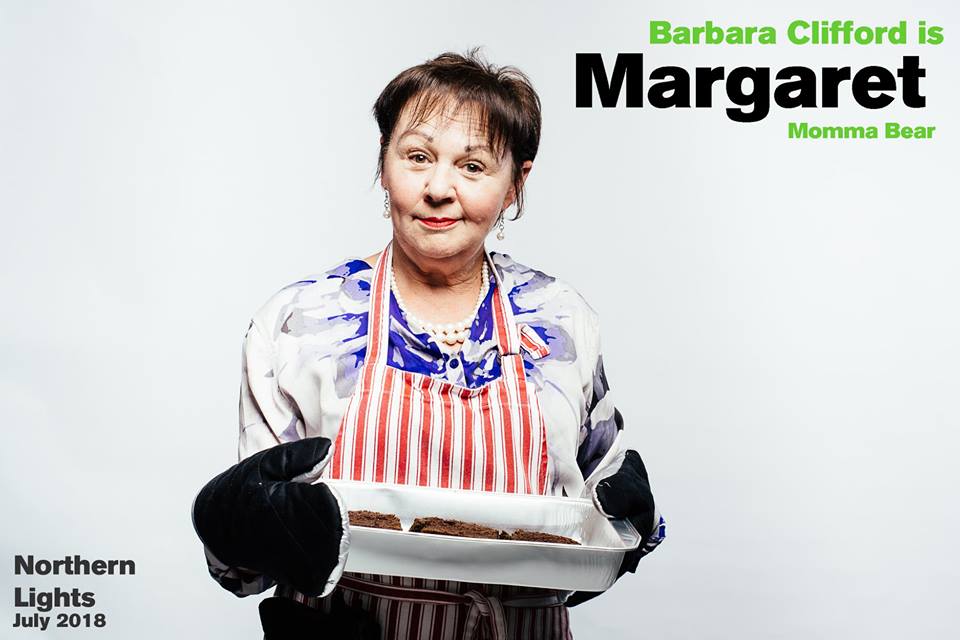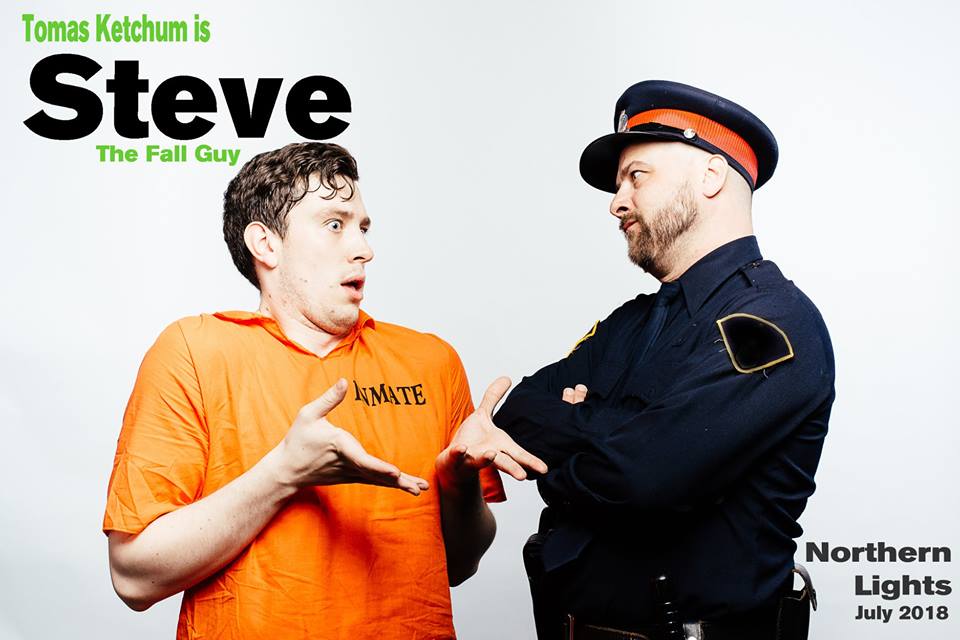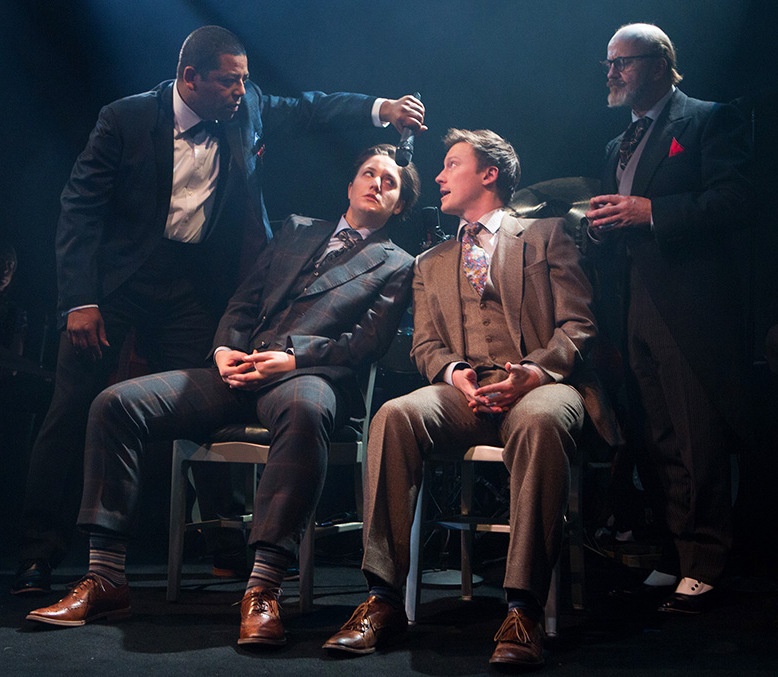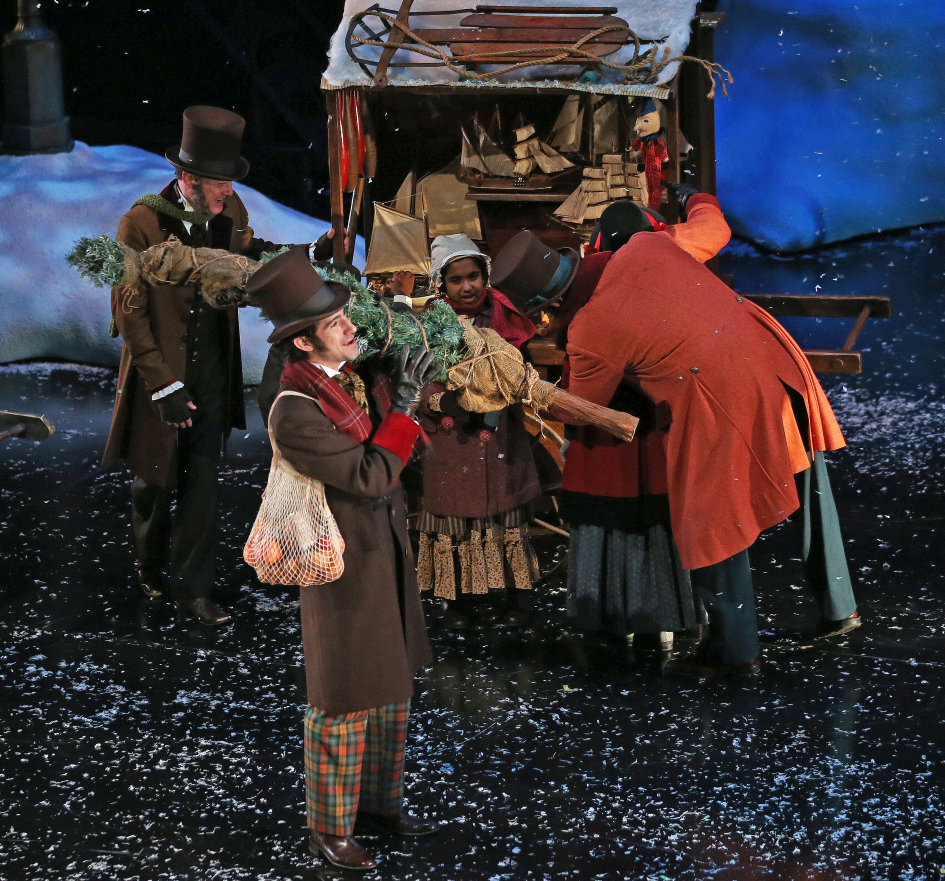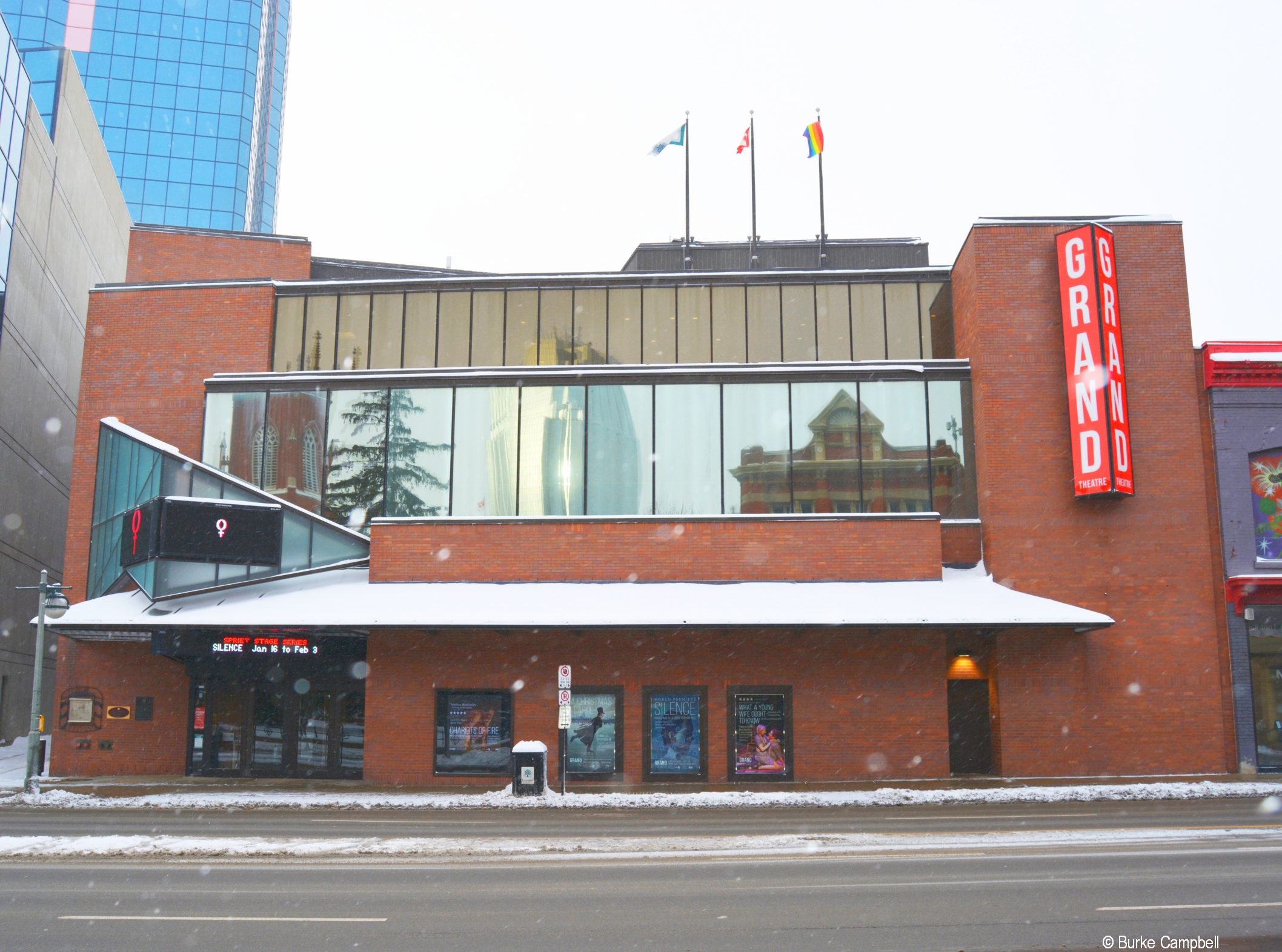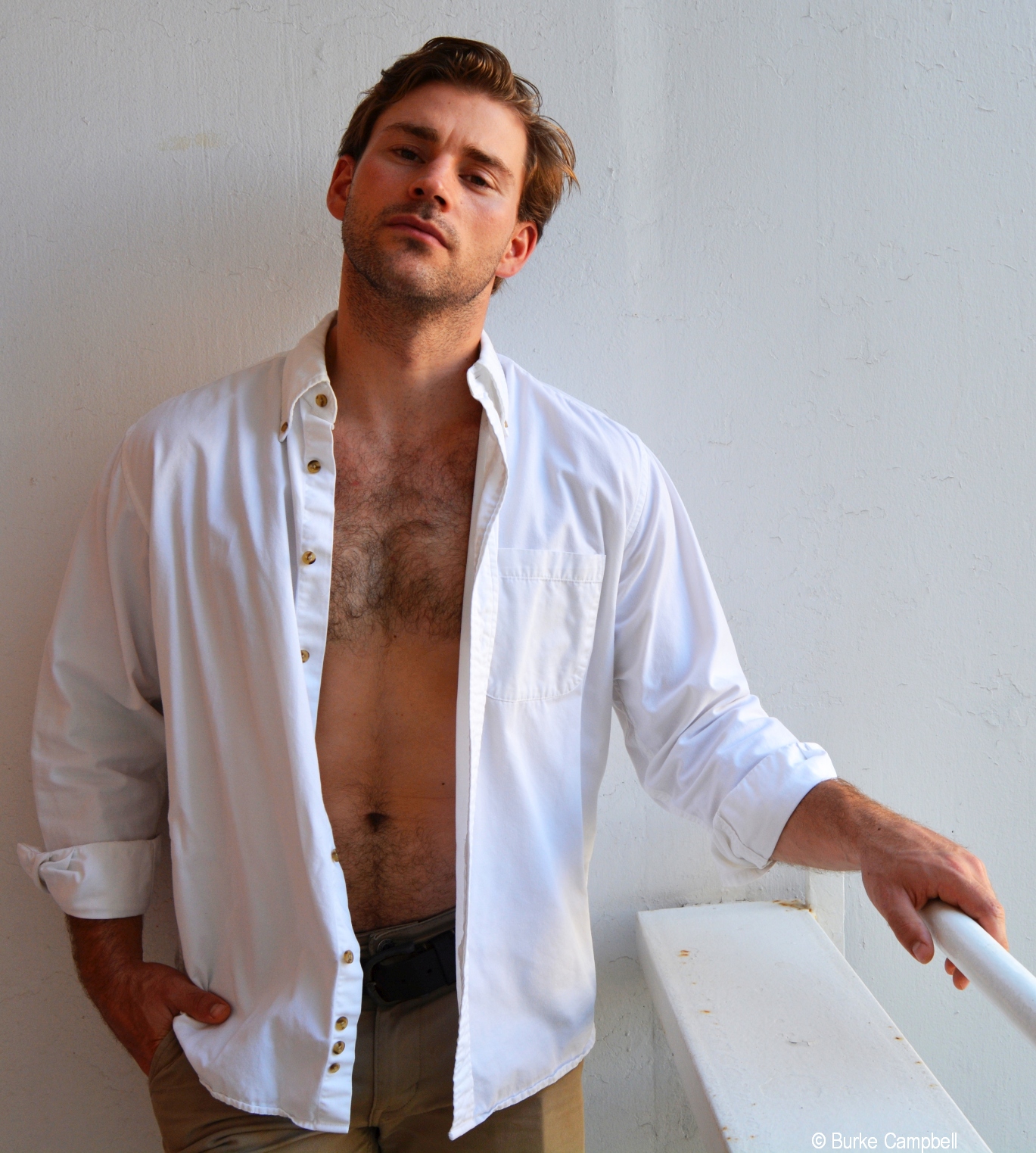
Iain Moggach: New Artistic Director at Theatre by the Bay, Barrie, Ontario
In 2015, Iain Moggach was a theatre arts student at George Brown in Toronto, mostly centred on acting. But in 2018, only three years later, he would be named the new Artistic Director at Theatre by the Bay, in Simcoe County, about an hour’s drive from Toronto. Moggach’s rapid rise from student to running an established theatre company is a dramatic tale all its own.
Born in 1990, in Ottawa, Iain Moggach had an unusually intellectual childhood. His father is a well-known academic, in the area of political science and his mother is an English teacher. Even as a child, Iain spent time in Pisa, Italy, and Cambridge, England, travelling with his family on sabbaticals. As a boy, he was exposed to Europe’s rich cultural landscape. Abundantly literate, by the age of 16, he had read all of the 38 plays of William Shakespeare. As a teenager, he attended the Foundation Year Programs at King’s College in Halifax, immersed in all the great literary works. This was a classical education, at its finest.
With such a pedigree, one might imagine Iain would have pursued a purely academic career. But Moggach has an unconventional bent. While attending courses in the humanities at Carleton University in Ottawa, he began working in theatre, his secret calling. At Sock ‘n’ Buskin, the university’s theatre company, he handled marketing, publicity, as well as a wide range of errands. After Carleton, he came to the realization that “Theatre is what I need to do.” He decided to enroll in the theatre program at George Brown College in Toronto. Shortly thereafter, an extraordinary opportunity occurred.

Iain Moggach (left) Alex Dault (centre) and Samantha Holland in Barrie, Ontario
One day, in 2015, while Moggach was in school at George Brown, Alex Dault, the Artistic Director at Theatre by the Bay (TBTB), walked in. Theatre by the Bay is a professional theatre company focused on developing community stories and artists, producing plays that deal with current issues as well as historical events that have affected the local area. Dault explained that the theatre was starting what was called an Independent (indie) Producers Co-op, in Barrie, Ontario. For those selected, this venture offered hands-on training in the production of plays. Iain was aware that to enjoy a sustained career in theatre these days, it’s essential to have a working knowledge of producing drama. As Dault spoke, Moggach saw his chance.
Visiting Barrie in the summer of 2015, Iain discovered the natural splendour of a booming city built around water. There, along with another recruit, Samantha Holland, they worked on the production of Nine Mile Portage, a historical play about Barrie by Alex Dault. Performed outdoors, along the shoreline, Nine Mile Portage did well. Further, Moggach directed Romeo and Juliet in nearby Port Perry.

Outdoor staging of Nine Mile Portage, Barrie, Ontario
After the summer, and unexpectedly, the post of General Manager became vacant at Theatre by the Bay. A phone call from Alex Dault persuaded Iain to move to Barrie for a year, filling the job. In 2016, Moggach was promoted to the company’s Executive Director.
The 2016 TBTB season proved to be momentous, with two shows produced in Barrie. One was the epic play, Faust, the masterpiece by the German playwright Goethe, directed by Jeannette Lambermont-Morey, with original music by Leslie Arden. The cast was astonishing and Faust was a sell-out.

Also, the newly minted play “We Must Have More Men!”, co-written by Alex Dault and Danielle Joy Kostrich, about how local life in Barrie was affected during World War I was a smash hit. In 2017 came The Five Points, a dramatic work drawn from interviews with the townsfolk of Barrie, many of which Iain conducted. The Five Points provided a surprising look at the growing pains a small city suffers as it transitions into urban sprawl. In this large ensemble production, Iain Moggach played one of the more poignant roles. The drama itself made Barrie, Ontario, a symbol of a community struggling to hold on to its identity while undergoing disruptive expansion.
Making Barrie a Hub of Theatrical Activity
In Barrie, Moggach found himself working non-stop not just on main stage productions, but also on one of the major initiatives of TBTB, the Barrie Theatre Lab (BTL), which began in January 2017.

Iain Moggach worked to bring the BTL to life, overseeing the monthly event. Moggach reads all the submissions, ensuring that each gathering showcases a diverse collection of scripts, in various styles and genres. The Barrie Theatre Lab isn’t just about reading plays. It’s a key way of connecting to the community, in terms of programming and outreach, allowing those attending, including theatre management, to hear all the scripts and view a large number of actors who might wind up in future productions. So far, there have been 24 Labs that have workshopped plays, musicals, film scripts, script breakdowns/concepts and poetry. There have been 66 pieces read over those 24 Labs by 44 playwrights from Haliburton to Toronto, but mostly in Simcoe County.

As it has evolved, the Lab is a natural social environment where talent mingles with talent. Having personally attended several readings, the range of playwrights and scripts is astonishing. The Lab has also led to the doubling of the number of local actors auditioning for the TBTB season, and also tripled the theatre’s volunteer base. The local reaction to the Lab has been very positive, but as attendance grew, so did expenses. Additional financial support was needed for snacks, printing, and space for those attending. Anna Small, a local patron, learned of this need and stepped in as Title Sponsor. Again, this is the kind of community support that often appears when a theatre’s management shows genuine commitment.
Additional funding from the City of Barrie has also expanded the Lab’s activities. The Barrie Theatre Workshops were conducted in November and December of 2018. Instead of simply sitting and reading plays, the casts were sent copies of the scripts ahead of time, and acclaimed Canadian directors were brought in to workshop the script on its feet, with the actors moving about. Two such workshops were conducted by Jeannette Lambermont-Morey and Eli Ham, respectively. This allowed those attending to see more clearly what a professional rehearsal environment looks like. Since the Lab’s creation, with all these engaging activities, the number of local actors auditioning for the theatre’s season has doubled, and the number of volunteers has tripled.
A Turning Point for Theatre by the Bay
2018 turned into a triumphant season for Theatre by the Bay. Mary of Shanty Bay, written by Leah Holder and directed by Brandon Nicoletti, was sold out. Also, Alex Dault’s wildly comic farce, Northern Lights, was a huge hit. The play, based on the notorious raid of North America’s largest grow-up, in Barrie, was a critical and financial success.

Poster for Alex Dault’s wild comedy Northern Lights. Photo by Jordan Probst.
In 2018, riding on a high, Dault stepped down as AD, pursuing other opportunities, and Iain Moggach was named new Artistic Director of Theatre by the Bay. Only 28 years old, Iain Moggach now heads the theatrical enterprise. Genial by nature, he has abundant energy and a will to succeed. Also, his hands-on qualifications and genuine enthusiasm attracts support and resources.
Under Alex Dault’s vision, Theatre by the Bay pushed a mandate to write local shows, and use local artists whenever possible. This mandate will continue, and as Iain notes, “This model has spread to other theatre communities.” Regarding his new tenure as leader of Theatre by the Bay, Moggach remarks, “I’m excited about being Artistic Director here because the Barrie community is becoming more diverse and the stories here more complex. We have a new community of artists and we’re discovering what a strong local culture can mean.”

But local history isn’t always squeaky clean. Throughout its history, Simcoe County has nurtured a dark underbelly filled with nefarious activities. The land was mostly wilderness, barely populated, and criminal gangs enjoyed fair pickings. At present, Moggach is busy writing a musical destined for the stage dealing with the shadier and more sinister elements of what was referred to as “uncivilized land”. This is just one of many projects. In March of 2019, Moggach will be busy directing the beautiful and haunting play Dancing at Lughnasa, by Brian Friel, at the South Simcoe Theatre.

Iain Moggach and Alex Dault chatting before a show premieres.
Theatre by the Bay isn’t just a company. It’s a true “grass roots theatre movement”, deeply connected to its community. Iain Moggach is now in charge of it, and he is certainly an artist worth watching.
Home
All photos by Burke Campbell. Poster shot for Northern Lights by Jordan Probst.
© copyright by Burke Campbell. All rights reserved.
























 SEX T-REX ROARS IN CRIME AFTER CRIME (AFTER CRIME)
SEX T-REX ROARS IN CRIME AFTER CRIME (AFTER CRIME)






































